Art & Exhibitions
Does Massimiliano Gioni Know Anything About Women?
Here are images from a massive show he curated about motherhood.
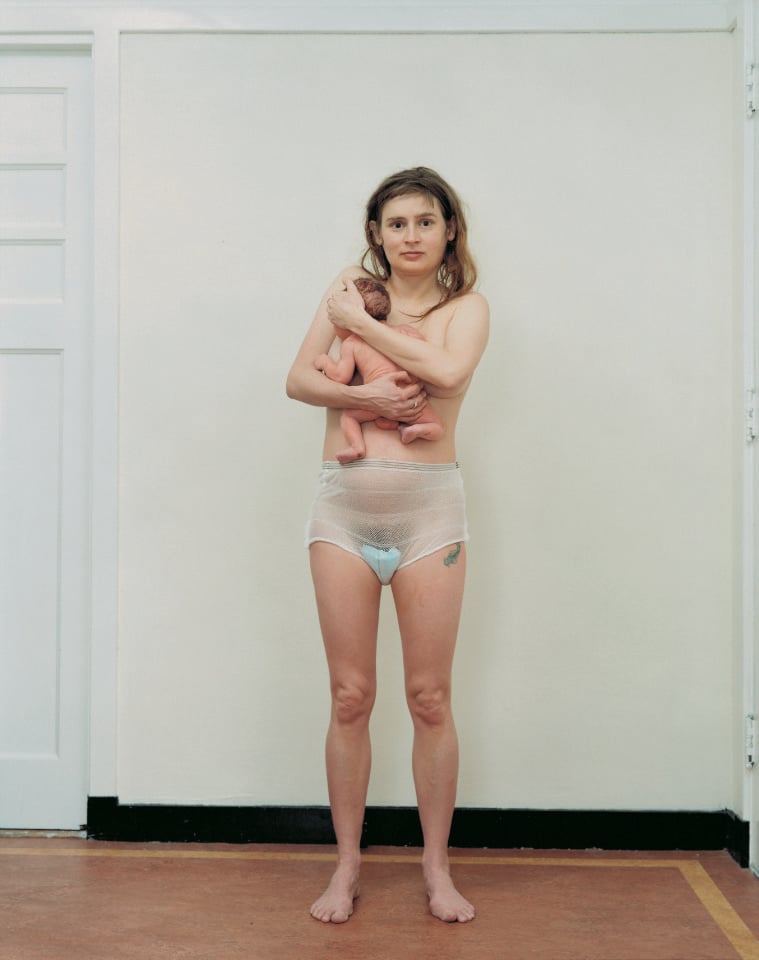
Here are images from a massive show he curated about motherhood.

by
Clara Zevi

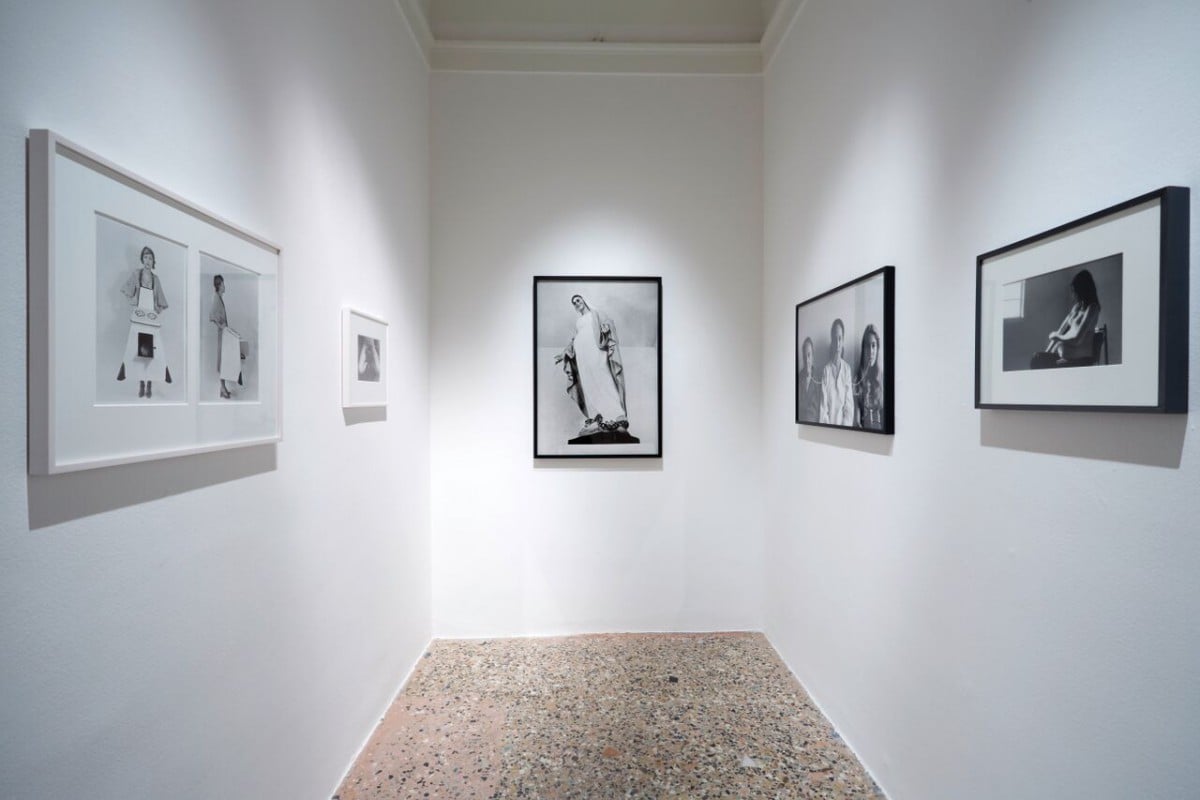
Gino De Doninicis, Opera unica-Unica immagine della statua inesistente (1973).
Image: Marco De Scalzi. Courtesy Palazzo Reale.
Milan’s Palazzo Reale, the former seat of the Italian government, recently opened its doors to the public for a mammoth show all about women, and more specifically, motherhood.
“‘The Great Mother‘ is an exhibition about women’s power: not just the life-giving creative power of mothers, but above all, the power denied to women and the power won by women over the course of the twentieth century,” reads the opening line of the press release. In a building that has seen the most influential men in Italy rise and fall from grace, “The Great Mother” presents over 400 works of art made by 127 modern and contemporary artists from all over the world.
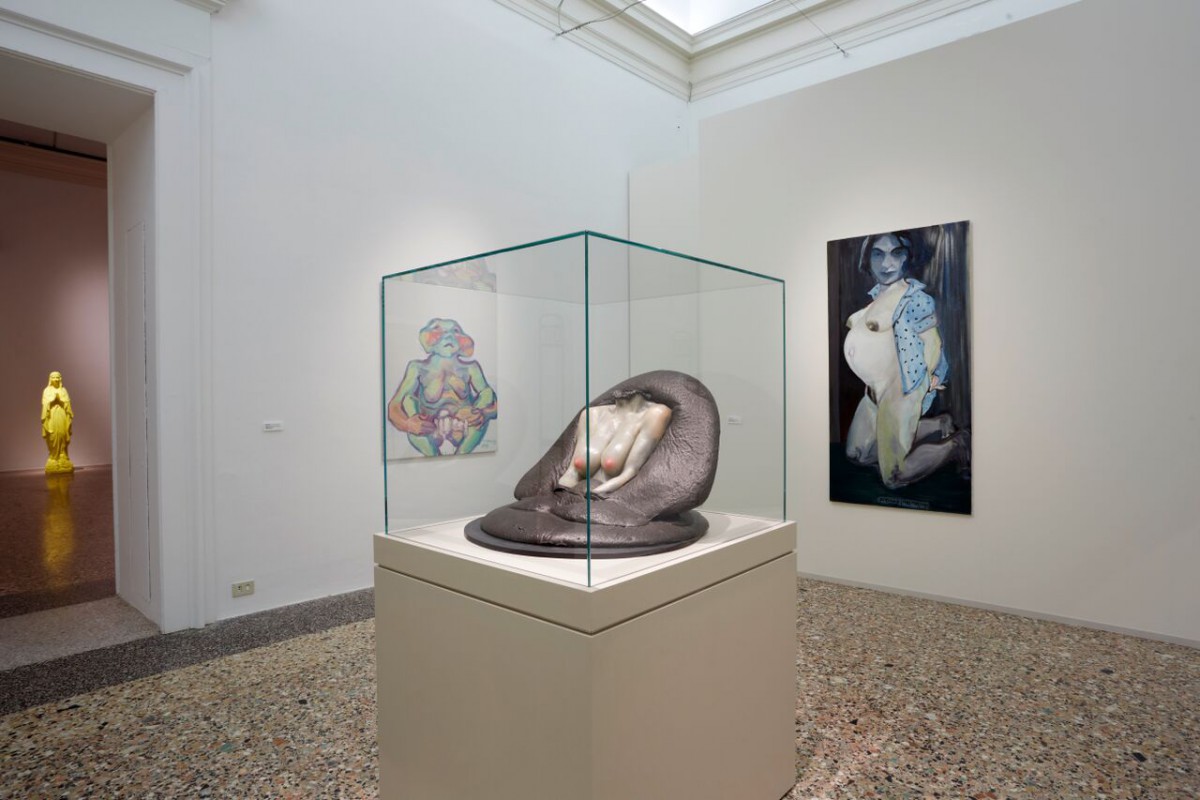
Installation view including work by Maria Lassnig, Alina Szapocznikow and Marlene Dumas.
Image: Marco De Scalzi. Courtesy Palazzo Reale.
Massimiliano Gioni, Artistic Director of the New Museum in New York, and curator of the 2013 Venice Biennale, organized this encyclopedic exhibition, which was produced by the Nicola Trussardi Foundation. The show takes a magnanimous subject—motherhood—and looks at it over an equally hefty period of time—100 years—to compile a huge body of work that represents the theme through various perspectives.
Last month, Gioni spoke to artnet News in an exclusive interview about the exhibition, which features work by male and female artists. “Paradoxically, throughout the 20th century the image of motherhood was also built by men for men, so it was important to include men’s works.” He continued, “And I hope that when you get out of the show, gender will appear to be more of a spectrum than a binary opposition.”
It seems that Gioni has succeeded in his mission.
He has included Rineke Dijkstra‘s photographs of disheveled mothers clenching tightly onto their newborns moments after giving birth and Katharina Fritsch‘s traditional sculpture of the Madonna coated in yellow neon paint. Gioni has also added Rosemarie Trockel and Günter Weseler‘s plastic doll wrapped in linens lying in a wicker rocking bed and Salvador Dali‘s 1932 painting, William Tell and Gradiva, an erotic scene of a man and a woman nude and alone in the desert.
The acclaimed curator chose male and female artists whose representations of birth, childhood, sexuality, femininity, and masculinity recite various accounts of womanhood and motherhood.
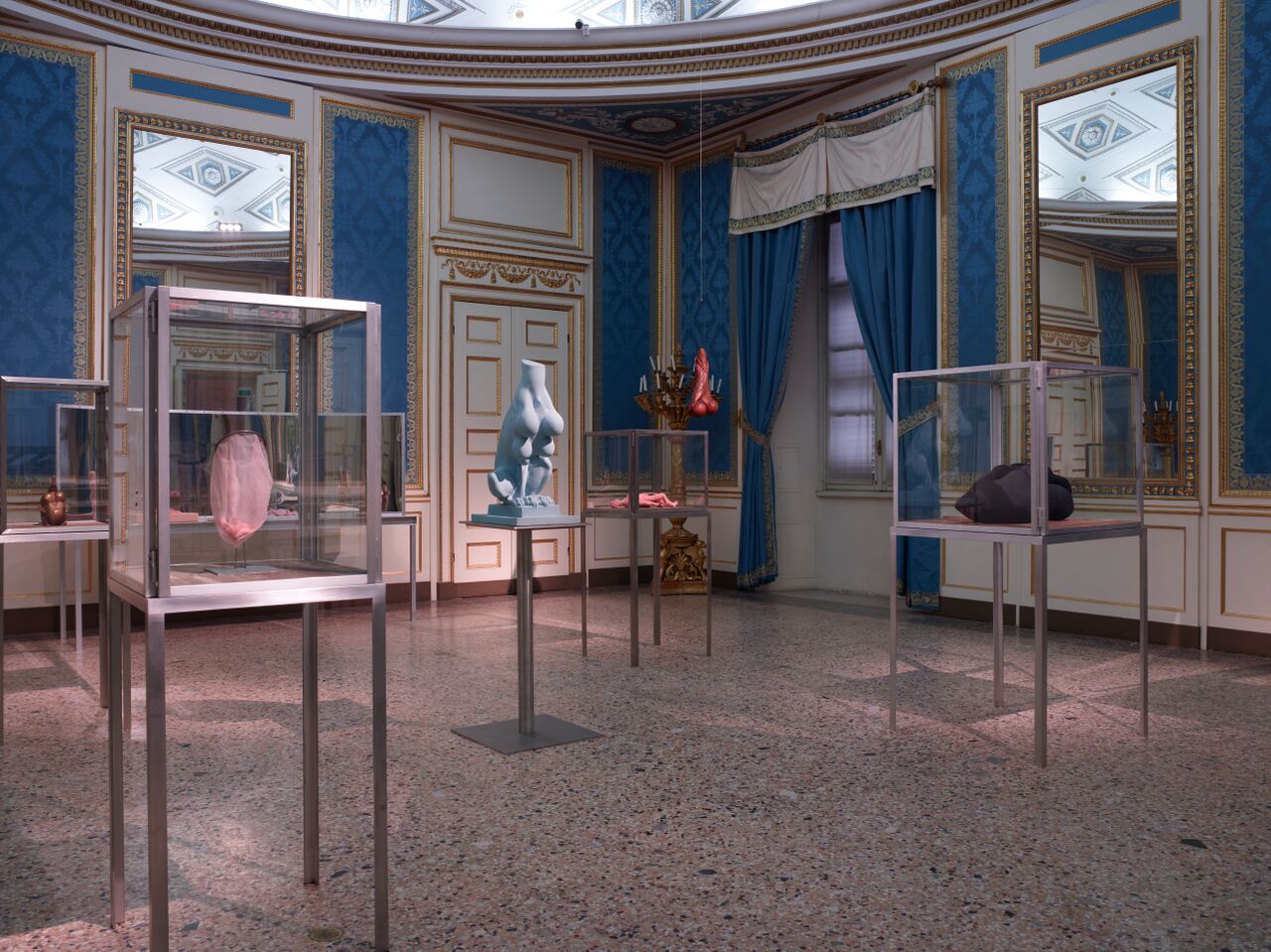
Installation view of Louise Bourgeois’s works in one of the domed halls.
Image: Marco De Scalzi. Courtesy Palazzo Reale.
The Palazzo’s 29 halls are packed with paintings, photographs, installations, films, sculptures and work in whatever other medium you might imagine that traces, supports, bashes, distorts and questions the link between power and gender.
Artworks ranging from the early avant-garde to the present day come together to form this ambitious show.
But worry not that Louise Bourgeois‘s Maman—the 30 foot high bronze spider and iconic image of motherhood that has crawled into the world’s most prestigious institutions, including the Tate Modern’s Turbine Hall, New York’s Rockefeller Plaza, Fondation Beyeler in Basel and the Guggenheim Museum in Bilbao—isn’t included, for there is a whole room dedicated to the late artist’s work.
With dark blue, silk wallpaper and large mirrors, the Bourgeois hall contains numerous pieces, including a light blue rubber sculpture, Nature Study (1984) and a collection of baby pink, fabric models of pregnant women that sit in a mirrored vitrine.
In the series of Cindy Sherman‘s History Portraits, the artist, with her play-doh breasts and archaic get-up, weaves together the biological elements of motherhood with traditional, social expectations of women. Sherman’s heavy, exaggerated make up and the artificiality of her breasts play on how being a good mother and a respectable woman are both expected but not always compatible.

Rineke Dijkstra, Julie, Den Haag, The Netherlands, February 29, 1944.
Image: Courtesy of Marian Goodman Gallery and the artist.
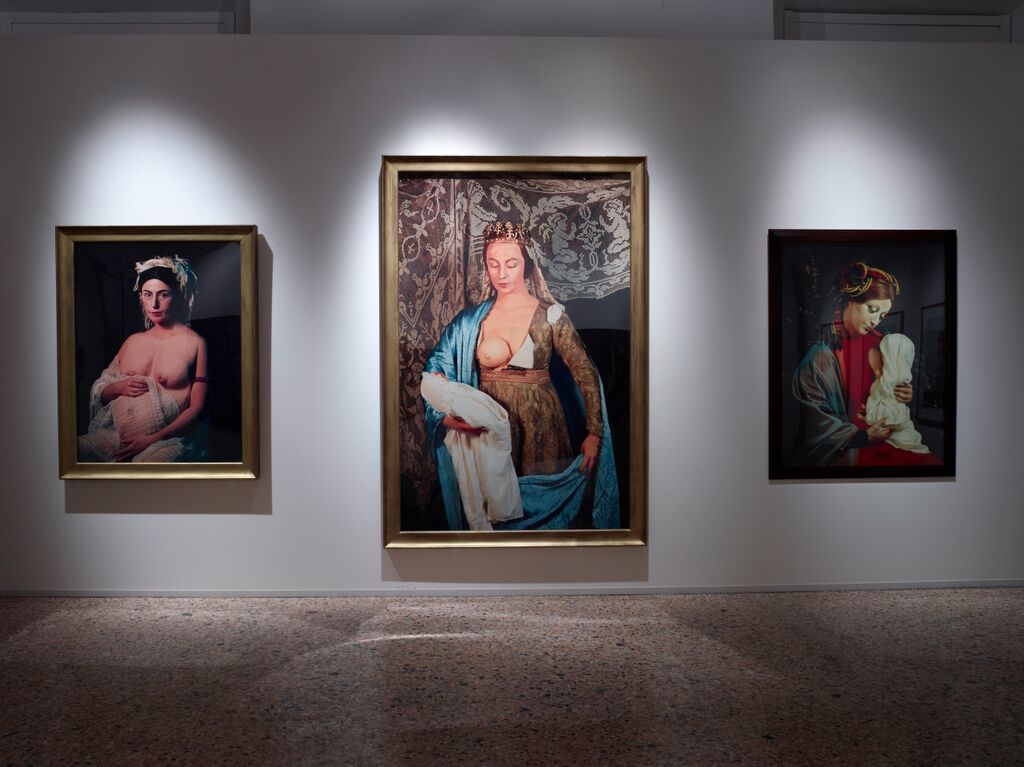
Installation view of a trio of Cindy Sherman’s History Portraits.
Image: Marco De Scalzi. Courtesy Palazzo Reale.
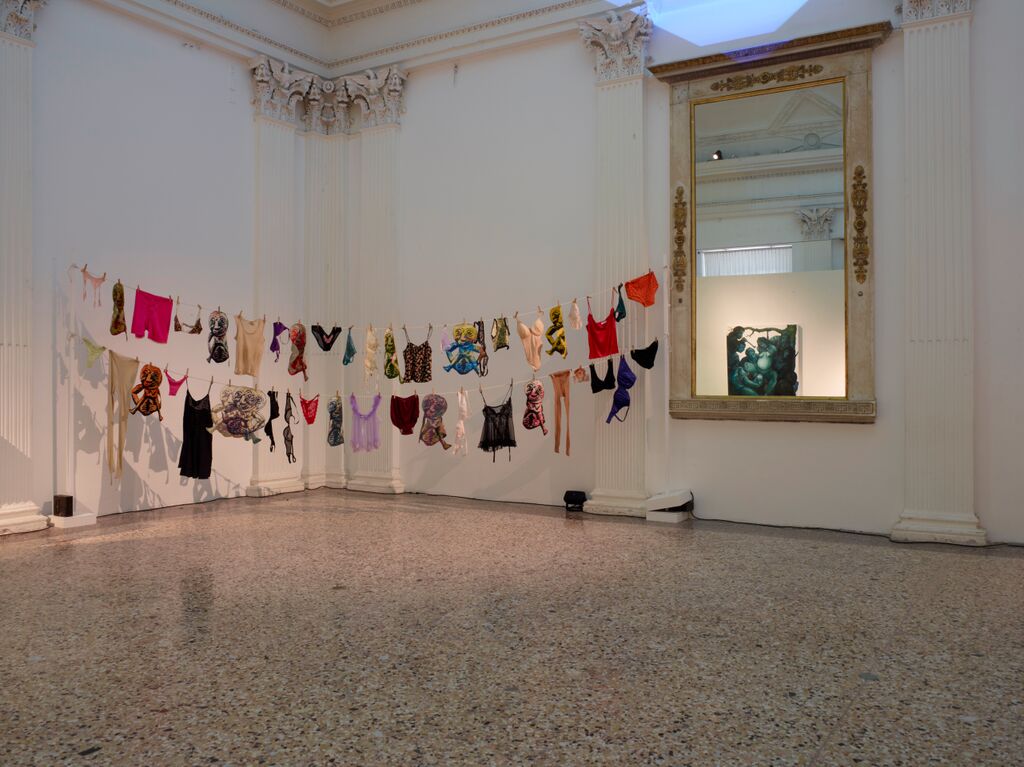
Installation of Nancy Spero at the Palazzo Reale.
Image: Marco De Scalzi. Courtesy Palazzo Reale.
In another room, Nancy Spero has hung two clothes lines draped with tummy-hugging underwear, lacy thongs, skin colored hosiery and transparent baby doll tops trimmed with lilac fur for her striking installation that sweeps across the corner of one of the museum’s halls.
The laundry is dotted with pieces of fabric screen-printed with jarring images of gruesome creatures. Seen together, the lingerie and gremlins confuse viewers, provoking thoughts of how we like to neatly separate what is attractive from what is nauseating.
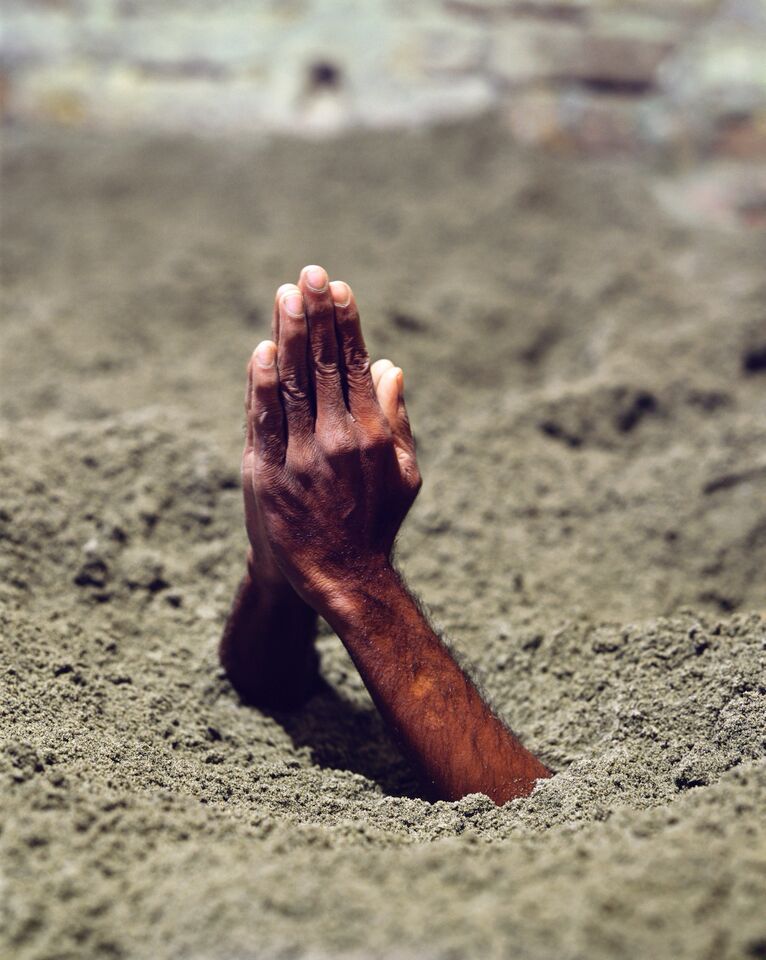
Maurizio Cattelan, Mother (1999).
Image: Courtesy Attilio Maranzano. Courtesy Maurizio Cattelan Archives.
Maurizio Cattelan‘s color photograph seen above is a glimpse of a performance he staged at the 1999 Venice Biennale, in which a fakir buried himself in sand, leaving visible only his hands clasped together in prayer. Famed for his controversial works such as Him—a sculpture of Hitler knelt in prayer—and La Nona Ora—a lifelike wax reproduction of the pope felled by a meteorite—Cattelan’s image of the fakir’s dark, hairy arms protruding from the grey sand is a striking symbol of devotion. In the context of the show, the photograph brings about questions surrounding ritual, religious belief, and male authority.
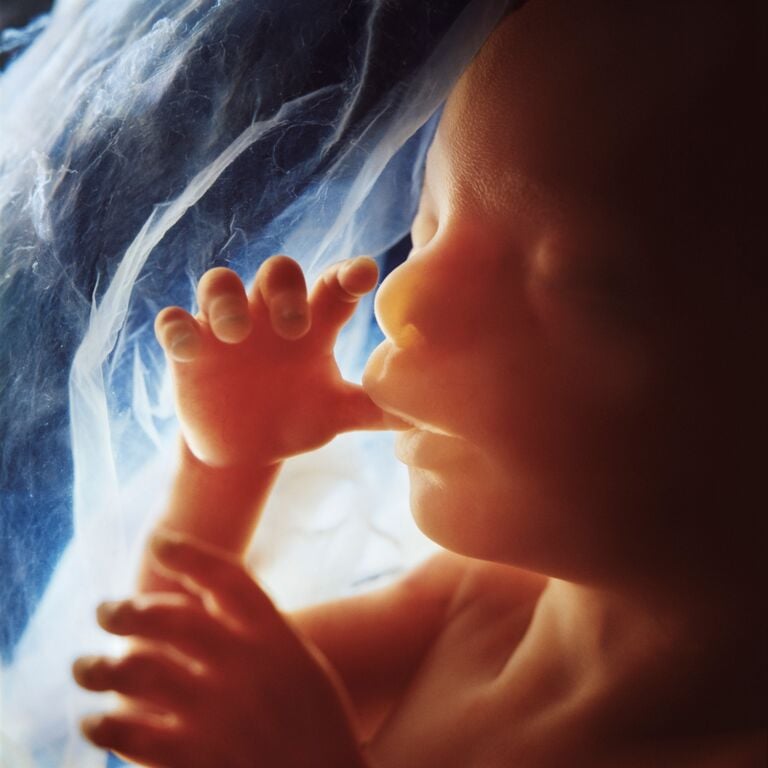
Lennart Nilsson photographs fetuses in their earliest stages as part of a series entitled ‘A Child Is Born.’
Image: Marco De Scalzi. Courtesy Palazzo Reale.
At first glance, Lennart Nilsson‘s endoscopic photographs of fetus’s in the earliest stages of life look like they belong in a sci-fi movie or anti-abortion poster. But once this initial reaction is set aside, his photographs come to depict the extraordinary and alien process that is motherhood.
Nilsson’s images will leave you thinking about how technology can shape moral decision-making and how the overlap of art and technology dictates contemporary discourses about humanity.
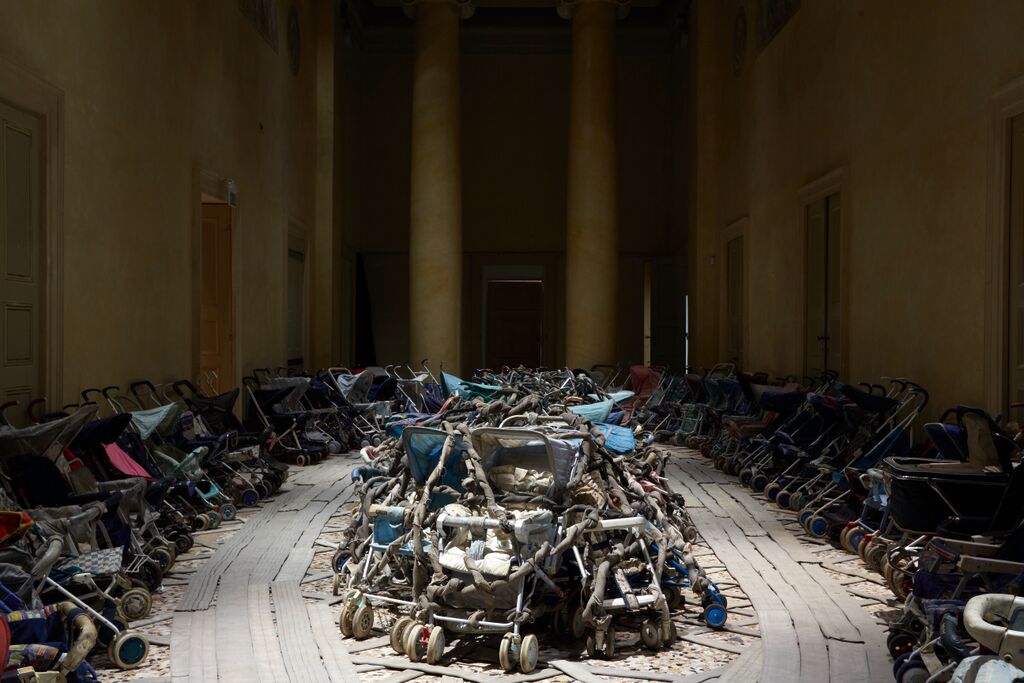
Nari Ward, Amazing Grace (1993).
Image: Marco De Scalzi. Courtesy Palazzo Reale.
Nari Ward‘s 1993 work, Amazing Grace, has been installed in one of the museum’s bare but stately halls. The artist crammed hundreds of old baby strollers in a room with ionic columns and rough walls that will have you wondering about the Palazzo’s political glory days.
These stately rooms once left royals speechless after an impressive staging of Mozart’s “Ascanio in Alba” in celebration of Archduke Ferdinand’s wedding. Later they were US President Woodrow Wilson’s temporary home while he was on an official visit to Italy. Now these halls tell a different story. Within the historically male-dominated building, Ward’s baby strollers become weighty symbols of the mother’s innate job of transporting her kin.
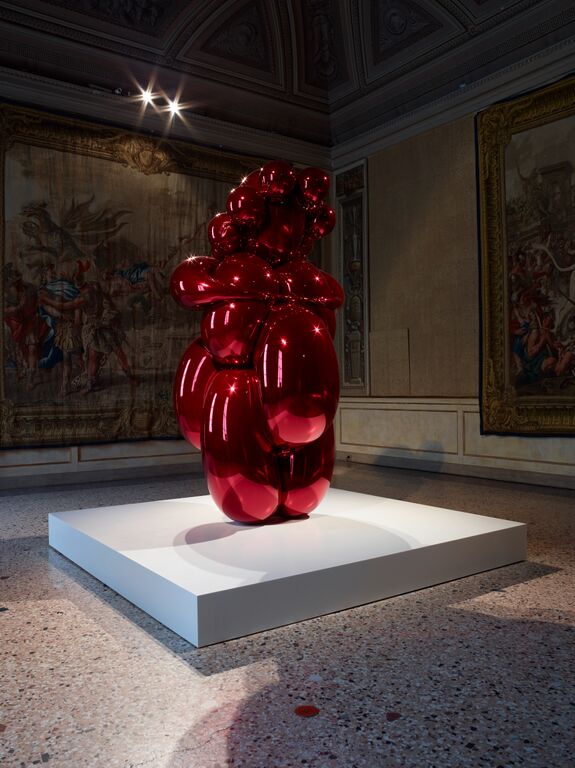
Installation view of Jeff Koons’ Balloon Venus (Red) (2008-2012).
Image: Marco De Scalzi. Courtesy Palazzo Reale.
In another wing of the mega-museum, Jeff Koons‘s shiny, Balloon Venus (Red) sits proudly on a whitewashed podium in the center of a room decorated with heavy, ornate tapestries. A flimsy addition to an otherwise thoughtful show, visitors will no doubt take countless selfies in the rosy reflection of the mother’s swollen belly.
Take a step back from the mirrored work and you’ll see a pregnant balloon doll topped with a Matisse-inspired hairdo.
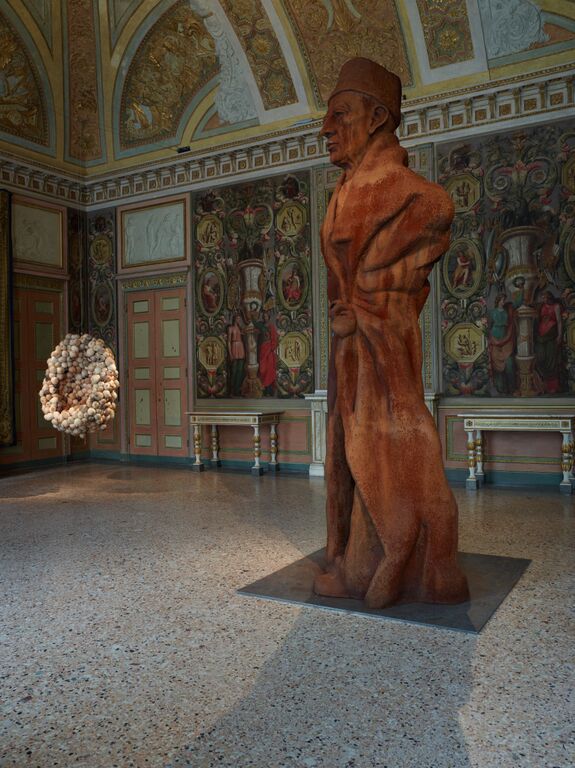
Installation view of Sarah Lucas and Thomas Schütte at the Palazzo Reale.
Image: Marco De Scalzi. Courtesy Palazzo Reale.
Although the exhibition is a commendable celebration of both female and male artists and their depictions of motherhood, there are brief moments of discomfort. In a room shared by Thomas Schütte and Sarah Lucas, this year’s British representative at the Venice Biennale, Schütte’s harsh and larger than life steel sculpture looms over Lucas’s Mumum (2012,) a hanging piece of delicate, neutral colors, formed of women’s stockings.
An intimate and politically-charged foray into the bottomless subject of motherhood, the sheer size alone of this fall exhibition is sure to stir conversations.
“The Great Mother” is on view at Palazzo Reale until November 15, 2015.
Related Stories:
artnet News’s Top 10 Most Expensive Women Artists At Auction
Why Are There Still So Few Successful Female Artists?
Women Painters During the Italian Renaissance
Why Are There No Artists or Art People on Forbes’ 100 Most Powerful Women List?
Art World Report Card: Andy Warhol’s Women